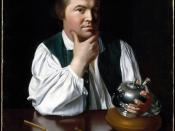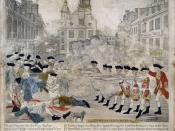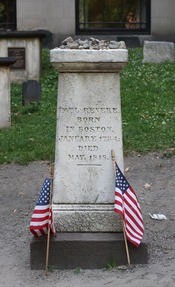'One if by land, two if by sea'-- the supposed famous words spoken by Paul Revere to Colonel William Conant, an American soldier stationed in the steeple of the North Church in Boston, waiting to relay the signal of the intended path of the British invasion on April 18, 1775 (The Glorious Cause 268) to Paul Revere. According to the legend Paul Revere was to be positioned across the Boston Bay from the North Church waiting for the signal from Colonel Conant. The Colonel was to hang one lantern in the steeple of the church if the British showed signs of an invasion on land, or display two lanterns in the spire if evidence existed a sea invasion by the British. Once Paul Revere saw the two signal lanterns hanging in the steeple, signaling the imminent approach by sea of the British forces, he began his ride from Charlestown to Lexington to Concord (Lancaster 94), warning the citizens of these towns of an approaching British invasion.
So began the famed 'midnight ride of Paul Revere,' a ride which warned the colonists of an approaching revolution that would shape the future of America.
During the early formation stages of our country, there came a time when the overpowering mother country of Britain imposed a new system of taxation to control the colonies and the colonists. The Sugar Act of 1764 was the first step in bringing the new taxation system into affect. The Sugar Act , which replaced the Molasses Act of 1733, was designed to raise revenue without regulating the trading system that the colonies had established. Soon, Britain began to establish methods of taxation without any method of representation of the colonies (The American Revolution; an HTML project). This taxation without representation had angered the colonists. The...


